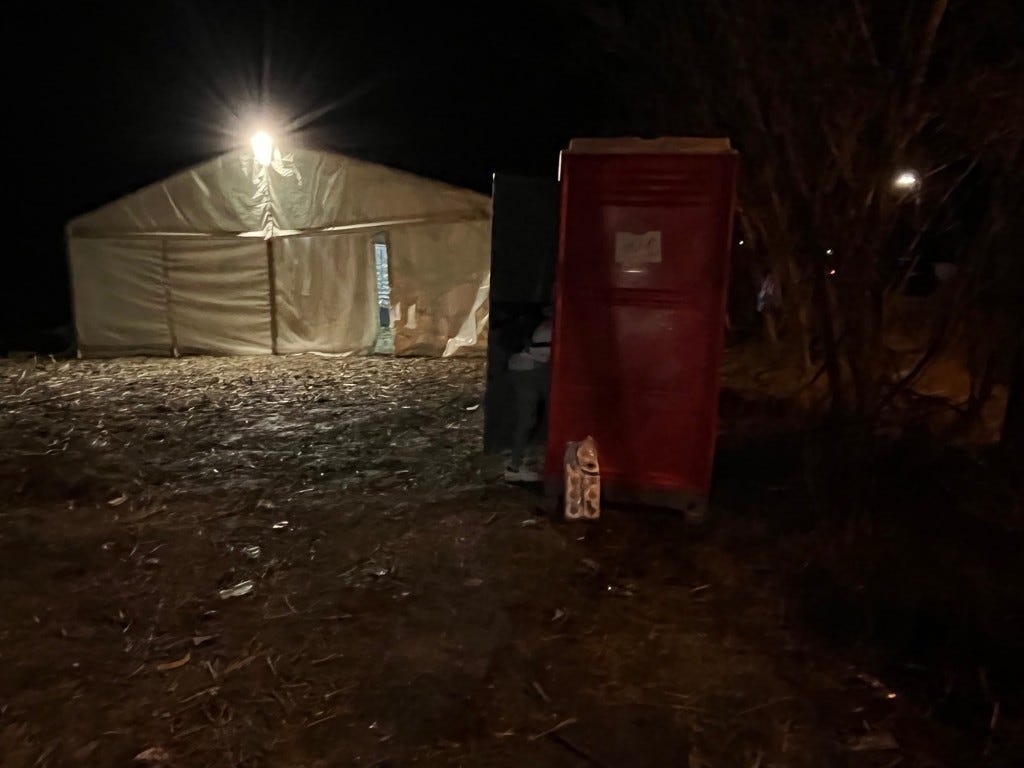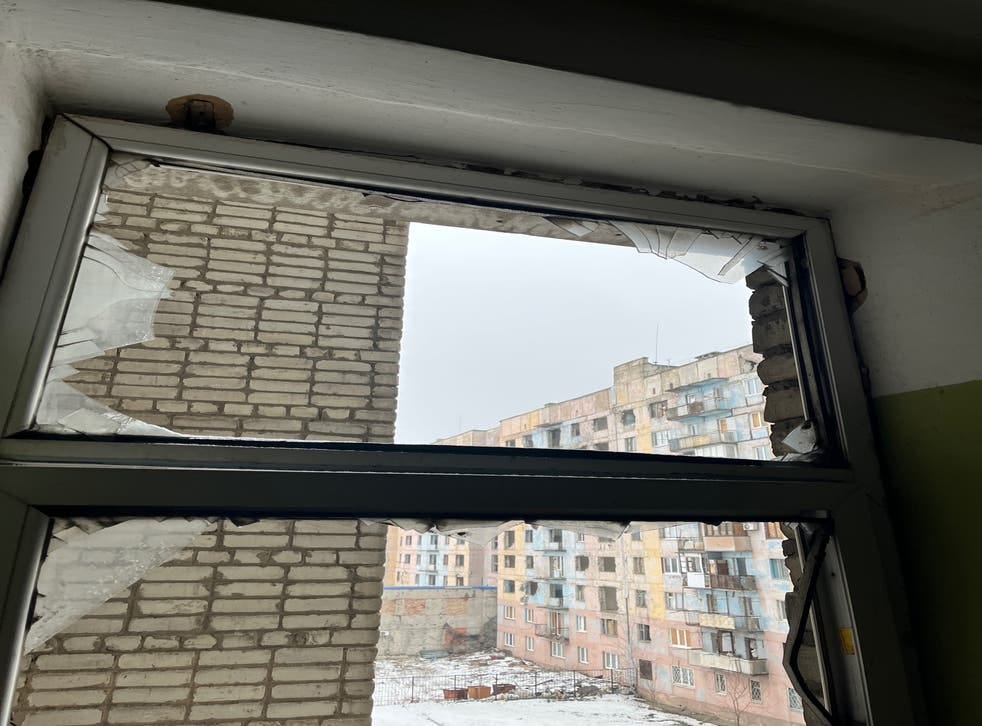DISPATCHES FROM UKRAINE: Inside the Anguished Fight, Terrifying Russian Super Missile and Ukrainians at the Front Line
“When the rich wage war, it's the poor who die.” - Jean-Paul Sartre
Will try to keep you update on happenings inside Ukraine… things changing rapidly…
Some reading for now…
INSIDE THE ANGUISHED FLIGHT FROM UKRAINE AS WOMEN, CHILDREN SEARCH FOR SAFETY
The women walk through the frozen night juggling infants in their arms, kids tugging at their jackets, backpacks stuffed with necessities — and a sense of sadness for the war-ravaged land that days ago was home.
“The air-raid sirens were ringing all night, so our men sent the women and children away and stayed to fight,” said a teary Nadia, 36, as she headed across the Hungarian border with her 6-year-old son Oleg and friend Tatiana and her 9-year-old-son, Makartha.
“Not a single fighting-age male decided to leave Ukraine. They all wanted to stand up and fight,” Nadia said.
“Our men picked up a weapon, and they are fighting against the Russians. They will fight the men who have been shooting rockets at us from Russia and Belarus.”
Nadia, who is from the fortress-style city of Ivano-Frankivsk, said men such as her husband Ruslan, a mechanic, and those in surrounding towns came together to form something of a “local defense guerilla.”
She intends to take her child to grandparents in Italy and return to Ukraine straight away to protect the family’s property.
It is clear that she and those around her are all prepared to sacrifice their lives. Battling for their land has become their most important duty.
“We want to live like free people, and if it comes down to it, will we die fighting for that,” Nadia said, stroking her son’s soft hair. “It is only the mothers of young children who have left from our area. Even our parents are left there. We will go back.”
Still, her bravery gives way to angst when she speaks of all she was forced to leave behind, flicking through photographs on her phone as if worried her memory is already fading.
Nadia said she lived in a beautiful wooden home with an oriental-style balcony and a large, lush, green lawn. She cannot believe she is talking about her things in the past tense.
CLICK TO READ MORE ABOUT THE REFUGEE PLIGHT
THE TERRIFYING RUSSIAN SUPER MISSILE NOBODY IS TALKING ABOUT
As tensions between Kyiv and Moscow continue to dominate news headlines, there is one asset the Kremlin has that no other nation does: the largest nuclear-armed, nuclear-powered underwater vessel in the world.
Meet the Russian Navy’s formidable Poseidon torpedo, code-named Status-6. It’s an uncrewed, 14,700-ton underwater vehicle that can travel an impressive 65 miles per hour for 6200 miles at a depth of 3,300 feet. Moreover, the rocket-shaped robot – when operating in low-stealth mode – sends sound waves to the ocean floor, thereby reducing the radius of detection. Furthermore, the unprecedented and powerful torpedo can also carry a nuclear payload and a conventional high-explosive warhead, and its range is limitless.
In an address detailing Russia’s nuclear triad development four years ago, Russian President Vladimir Putin referred to the Poseidon as a “superweapon,” and few independent experts can disagree. U.S. officials have noted that it can reach American ports and far exceeds the Pentagon’s underwater capabilities. It is believed that the Poseidon’s main target is large ports stretching as far as Los Angeles, California – particularly those critical to trade, rather than surface ships or submarines.
Although the U.S’s strategic superiority comes in the form of anti-ballistic missiles, laser weapons, and railguns, the Poseidon glides far below the sea surface. Beyond that, the advanced system – stealthily designed to carry a cobalt bomb – can then trigger radioactive contamination spanning almost two hundred miles.
The AI-guided war machine is expected to be transferred to the Russian Navy this summer, concurrent with Russian Navy Day, which takes place on July 31. While publicly a wing of the traditional Navy, the Poseidon is believed to be under the operational thumb of the obscure Main Directorate Deep-Sea Research organization. Known as Military Unit 40056, the specialized submarine intelligence outfit was developed in 1976 to advance “underwater engineering” during the Cold War. Nevertheless, it is rarely mentioned in state-owned media and on open platforms.
The mammoth Poseidon first appeared on the Pentagon radar in 2015, and its first test launch took place in November 2016 in the Arctic Ocean. After just over two years, the Russian Navy announced in January 2019 that it would secure more than thirty such drones for deployment on four submarines. The following month, Putin announced that trials had been successful.
According to another defense expert, the Poseidon also comes with the ability to throw up a water wall of 1500 feet, of which the U.S. has “no credible counter.”
In contrast, U.S. forces are armed only with conventional, heavy-weight torpedoes that weigh a quarter of Poseidon’s weight and power. As evidenced by open-source satellite imagery, the Russian Navy continues to refine and enhance other Poseidon-linked systems. Thus, the U.S. has been left behind when it comes to underwater nuclear offensive capabilities.
CLICK TO READ MORE ABOUT THE SUPER MISSILE
‘OUR BROTHERS DID THIS TO US’: UKRAINIANS ARE SHELTERING IN PLACE — OR HEADING TO THE FRONT LINES
Weeks before Russia’s explosive invasion of neighboring Ukraine, the eastern oblast of Donbas still seemed strangely tranquil. While children stomped through snow-dusted parks, professionals teetered through frozen streets to small cafes and offices tucked into and around mortar-fissured apartment buildings, raw with the remnants of lives lost.
But even after eight years of war in and around the Russian-backed, separatist Donetsk region, Vitaliy Barabash — head of the military-civilian administration in the city of Avdiivka — knew something wasn’t quite right. “It has been strangely quiet the past few days, which can mean something is happening,” he said. “Everyone is nervous when it is so quiet.”
A soldier’s life is largely spent waiting – waiting for the next threat, the next explosion, and the next dreaded invasion. And scores of Ukrainians have taken up arms in recent years in order to defend the country’s sovereignty. Following Ukraine’s 2014 Euromaidan Revolution, which saw pro-Russian President Viktor Yanukovych toppled and the subsequent Russian annexation of Crimea and separatist assault on the east, Ukraine’s armed forces have grown from 6,000 soldiers to more than 200,000, a prominent portion of whom are women.
And if it was not for her fatigues and prominent Ukrainian military patch, Tatiana Vagridstsk, 39, could easily be mistaken for any other working woman and mother. The commander was a kindergarten teacher in 2014 when the war broke out. “I was working with children, and one day I just looked into their eyes,” she recalled. “I realized I needed to fight for the sake of our children, for their future. For their freedom.”
Hundreds of women have been recognized for their combat service since 2014, and dozens have paid the ultimate price to retain Ukraine’s sovereignty. Late last year, the country’s Ministry of Defense broadened criteria for Ukrainian women mandated by law to register for potential military conscription should a fully-fledged conflict break out. The regulation states that women between the ages of 18 and 60 from a variety of professions – such as musicians, librarians, journalists, veterinarians, and psychologists – are required to register for mobilization as part of the national reserve.
Women and their employers will face fines if they fail to register in their district of residence by the end of 2022. Moreover, women applying for jobs in an appropriate profession will also have to show their military registration certificates.
“When you see your brothers and sisters dying, it is a lot to take on. War is always a nightmare. It is a big psychological trauma that remains for the rest of the life,” Vagridstsk said. “But we must always strive for victory. I see the people who live here. I see the destroyed buildings. I see refugees having to relocate to other places, and when I see it, my soul aches. All we want is the right to live in a single, undivided Ukraine. We want our freedom, to live in a democratic society.”
As I left my meeting with the soldiers, venturing down broken streets lined with blistered buildings and destroyed dwellings, a gap-toothed, pro-Russia older man stormed around the corner, screaming to know why an American is here and yelling that I should go away with my democracy.
Even as the invasion got well underway in the early hours of Thursday, striking cities and crippling Ukraine’s air defenses across the country, associates in Russia told me it was merely a blip on the state-controlled news radar. Putin has been polishing the propaganda playbook for some time – projecting the notion that the Kyiv government is vehemently oppressing Russian speakers and committing a kind of “genocide” against its own people.
CLICK TO READ MORE ABOUT THE INVASION AND DISTRUST
For those interested in learning more about the aftermath of war, please pick up a copy of my latest book “Only Cry for the Living: Memos from Inside the ISIS Battlefield.”
Also, if you want to support small business:
And also now available Down Under!
Thanks again for your support. Follow me on Instagram and Twitter for more updates






